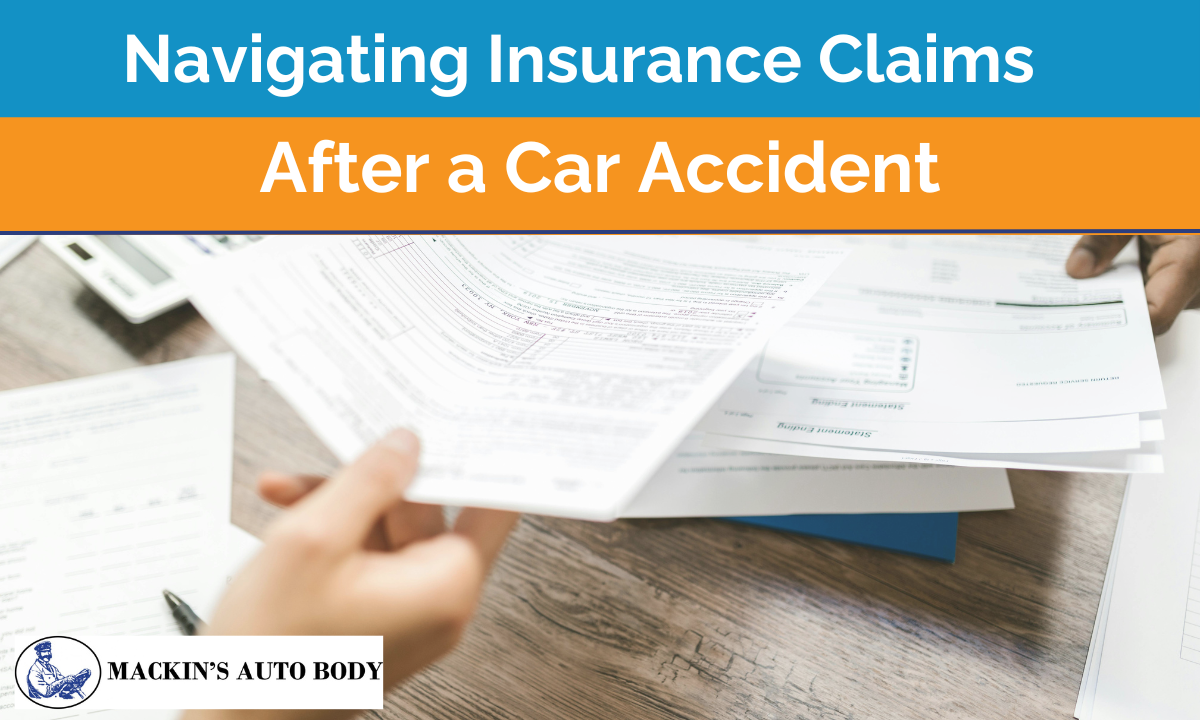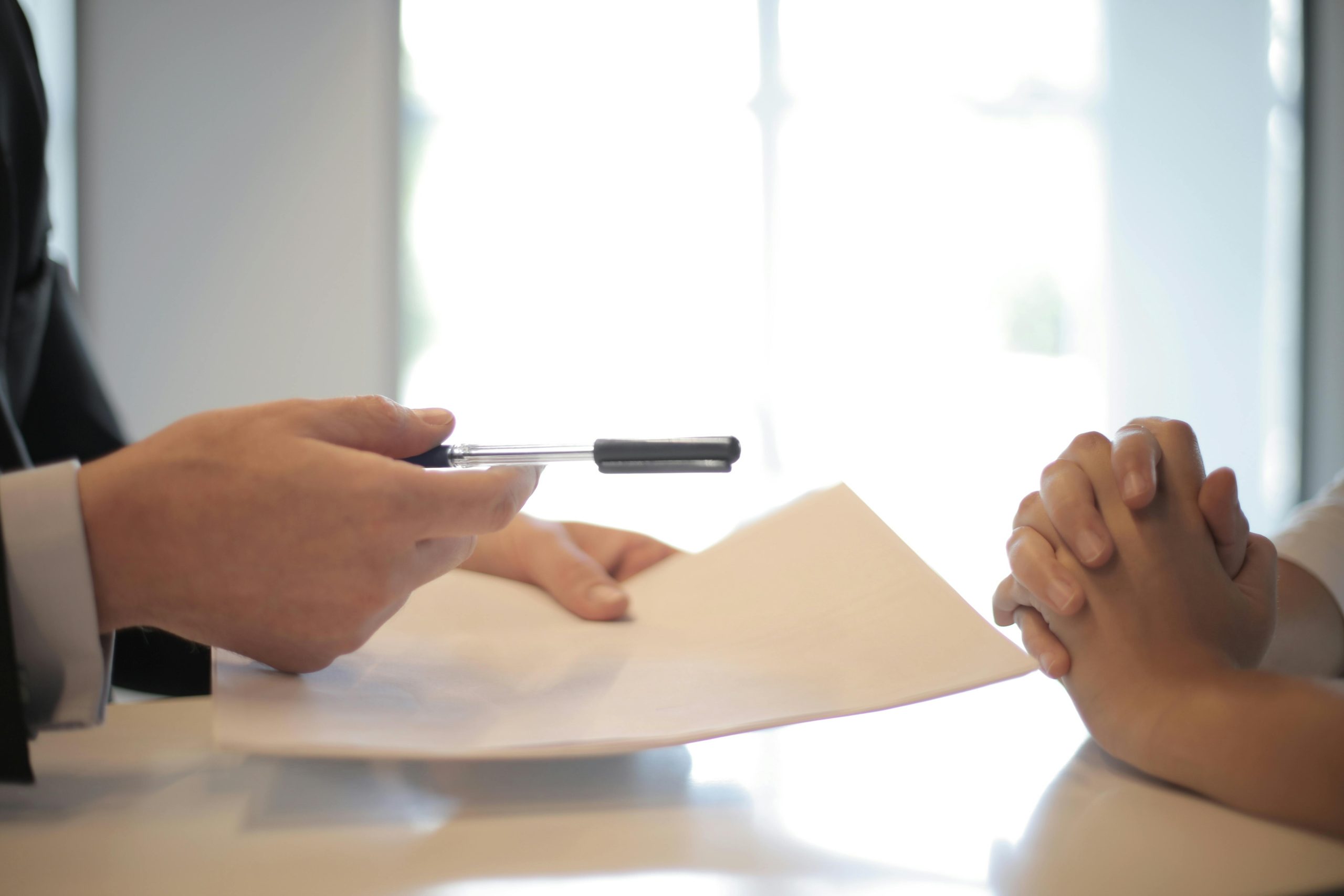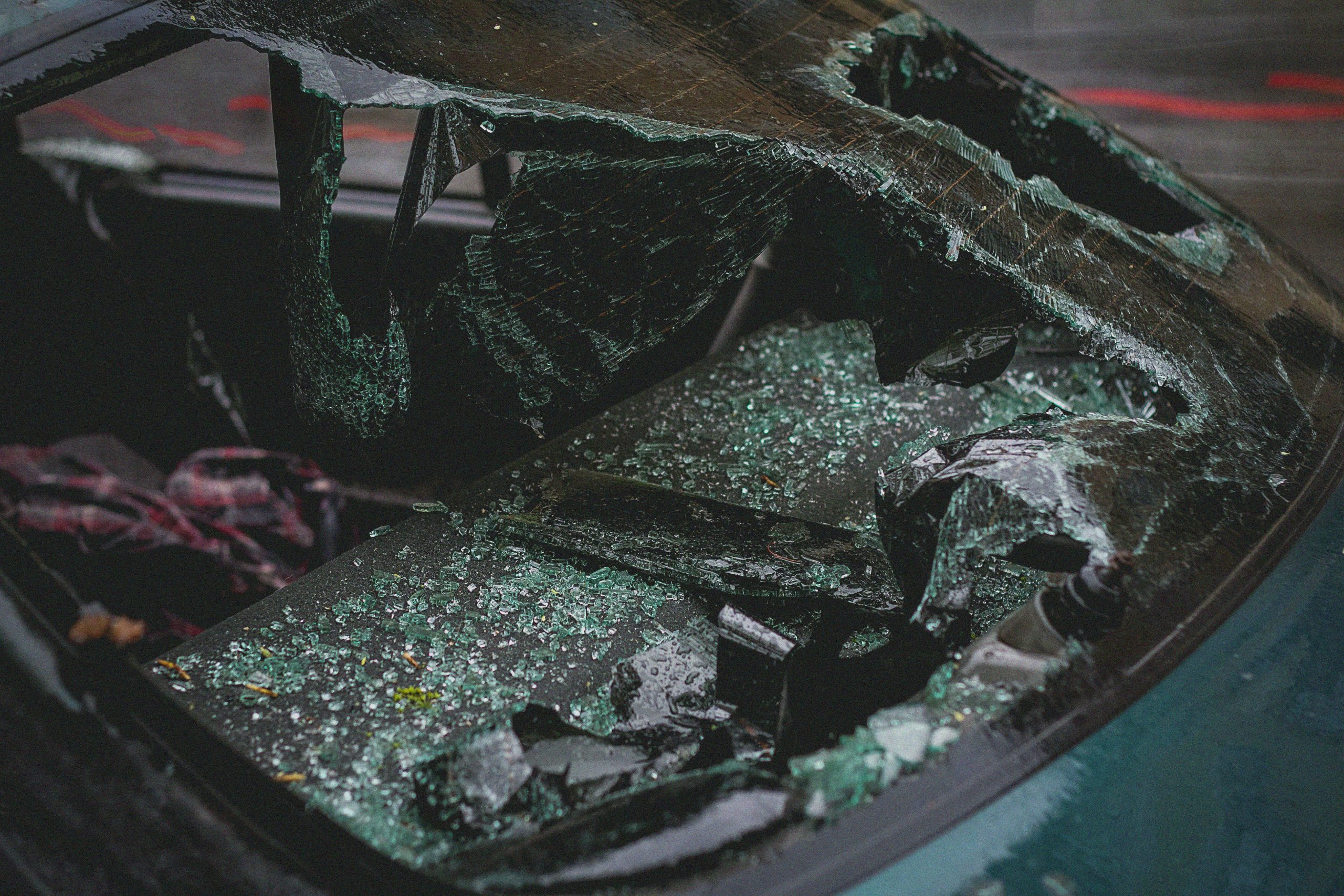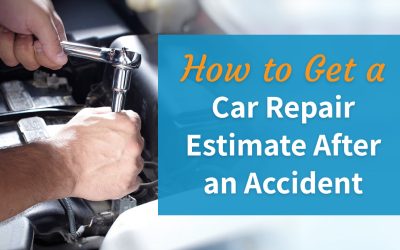
If you’ve never been in an accident that involved insurance claims before, the process can seem daunting. But breaking it down into manageable steps makes the whole thing feel more doable.
It’s important to focus on the immediate tasks at hand after a car accident. The first and most important thing is making sure everyone is safe. Then, you can work on gathering the information you need to file an insurance claim and get your car repaired.
Some collision shops, including Mackin’s, will work directly with your insurance to make the entire process easier and less stressful. In other cases, you may need to coordinate between your shop and insurer. We’re breaking it all down in this article!
Steps To Follow in the Insurance Claims Process
Step 1: Get To Safety and Seek Medical Care if Needed
If you’ve been in a collision, the first and most important step is to get to safety. If you, the other driver, or any passengers are injured, call 911 immediately and tell them to send medical assistance.
If your car is safe to drive, move it away from traffic. If you can’t move it, be sure to turn your hazard lights on to prevent additional accidents.
Step 2: Collect Information and Evidence at the Scene
Once everyone is safe, it’s time to document the incident as much as you can. Having a detailed record of evidence at the scene is one of the best ways to file your claim successfully:
-
- Write down details to remember: Include the time and location of the accident, any physical injuries you have, and witness testimonies.
- Take pictures of the scene: Document any damage to your car, bruises or other visible physical injuries on your body, and the street where the accident occurred.
- Exchange information with the other driver: Get their insurance information, name, contact information, and license plate number.
Step 3: File a Police Report if Needed
Depending on the severity of the collision, you may be asked to file a police report. If so, this report may be reviewed by your insurance company and/or the other party’s insurer in order to verify the details of the accident. If you need to file a police report, be as thorough and honest as possible.
In some situations, such as hit-and-runs or vehicle vandalism, you may be able to file a police report online with the PPB.
Step 4: Contact Your Insurance
Call your insurance provider as soon as you can – from the scene if possible. Reporting the accident immediately after it happens will make the entire process quicker and easier. It also gives you the opportunity to ask any questions so you know what to expect moving forward.
Step 5: File an Insurance Claim
Your insurance company will provide you with information about how the claims process works, guide you through the next steps to take, and tell you what information they’ll need to move forward.
In general, filing an insurance claim involves providing a verbal statement detailing the accident. This statement should include basic information about you, the details of the accident, and any damage and injuries. You may also be asked to provide supplemental documentation, which may include copies of police reports or medical reports.
Then, most insurance companies will request that you upload photos of vehicle damage and the scene of the accident through a mobile app. Throughout the claims process, be prepared to answer questions honestly and provide additional information and documentation as needed.
Step 6: Choose an Auto Body Shop for an Estimate
If your car has been damaged, then you’ll need to get repairs from a reputable collision repair shop. Some insurance companies have a list of preferred repair shops, but you aren’t required to choose a shop in their network. When looking for a body shop to conduct repairs, look for shops that have a proven track record of reliability and a good warranty.
Step 7: Follow Up With Your Insurance Company
Keep in contact with your insurance adjuster so you’re aware of the status of your claim. Make sure you understand exactly what’s covered under your policy and what isn’t.
Once you receive a repair estimate that you’re happy with, the insurance company must approve it. In some cases, this part of the process can be handled without your involvement if your shop is comfortable working directly with your insurer.
Step 8: Get the Repairs Done
Once you and your insurance company agree to the repairs, your collision repair shop can get to work on your car. In some cases, additional hidden damage may be discovered during the repair process. If this happens, your repair shop will contact you and your insurance company for supplemental approval of additional repairs.
If your policy includes rental car coverage, your insurance company may cover the cost of a rental while your car undergoes repairs.
Step 9: Finalize the Insurance Claim and Pick Up Your Car
Make sure you receive all necessary paperwork related to your insurance claim and repair work. Keep these documents in a safe place so you can access them if you need them in the future. Once all repairs are completed and you’ve signed off on the repairs, your insurance claim will be closed by your provider.
Frequently Asked Questions About Car Insurance After an Accident

What if I don’t have insurance?
In both Oregon and Washington, all drivers are legally required to have car insurance. If you get into an accident and you’re not insured, you may:
- Have your license suspended or revoked
- Have to pay for repairs out of pocket
- Be subject to fines and penalties
What if the other party doesn’t have insurance?
If you’re hit by an uninsured driver, you should still contact your insurance company to discuss your options. If you have uninsured motorist (UM) coverage, then your provider should cover some or all of the cost of your damages.
If you don’t have UM coverage, then you may be able to use collision coverage and personal injury coverage to assist you with the associated costs. You may also file a civil lawsuit against the uninsured driver.
Should I file a claim for a fender bender?
Whether or not you should file an insurance claim in the case of a fender bender or other minor accident depends on a few factors. If there are no injuries, only minor damage, and the repair costs are less than your deductible, it may not be worth filing a claim. You may also choose not to file a claim if you’re concerned about your premiums going up as a result.
However, there are some situations in which you should always file an insurance claim, even if the accident seems minor:
- If the repair costs are significant
- If you’re unsure about the extent of the damage
- If another party is involved, especially if you suspect they may claim damages
- If there are any injuries
- If you’re unsure about your liability
Get Your Car Fixed After an Accident in Portland

No one wants to get in a car accident and go through the hassle of filing an insurance claim and getting their car repaired.
At Mackin’s Auto Body, we understand this. That’s why we do everything we can to make the process as smooth, convenient, and stress-free as possible.
Not only do we provide top-of-the-line repairs and old-fashioned customer service, but we can also work directly with your insurer and arrange shuttle service or a rental car for you so you have less to worry about.
If you’re in an accident in the Portland or SW Washington area, we’ve got you covered.
Don’t hesitate to contact us. We’re here to answer your questions and get you back on the road quickly and safely!
Chris Roberts is the Director of Operations at Mackin’s Auto Body, where he has been making an impact since 2018. With a career in collision repair that started in 1999, Chris brings a wealth of experience and dedication to his role. Before stepping into his current position, he served as the Assistant Operations Manager at Mackin’s Auto Body from 2013 to 2017. Chris holds a BA from Northwest Nazarene University. When he’s not ensuring everything runs smoothly at Mackin’s, you can find him skiing down snowy slopes, wake surfing on sunny days, or cheering on his daughter at her soccer games.




